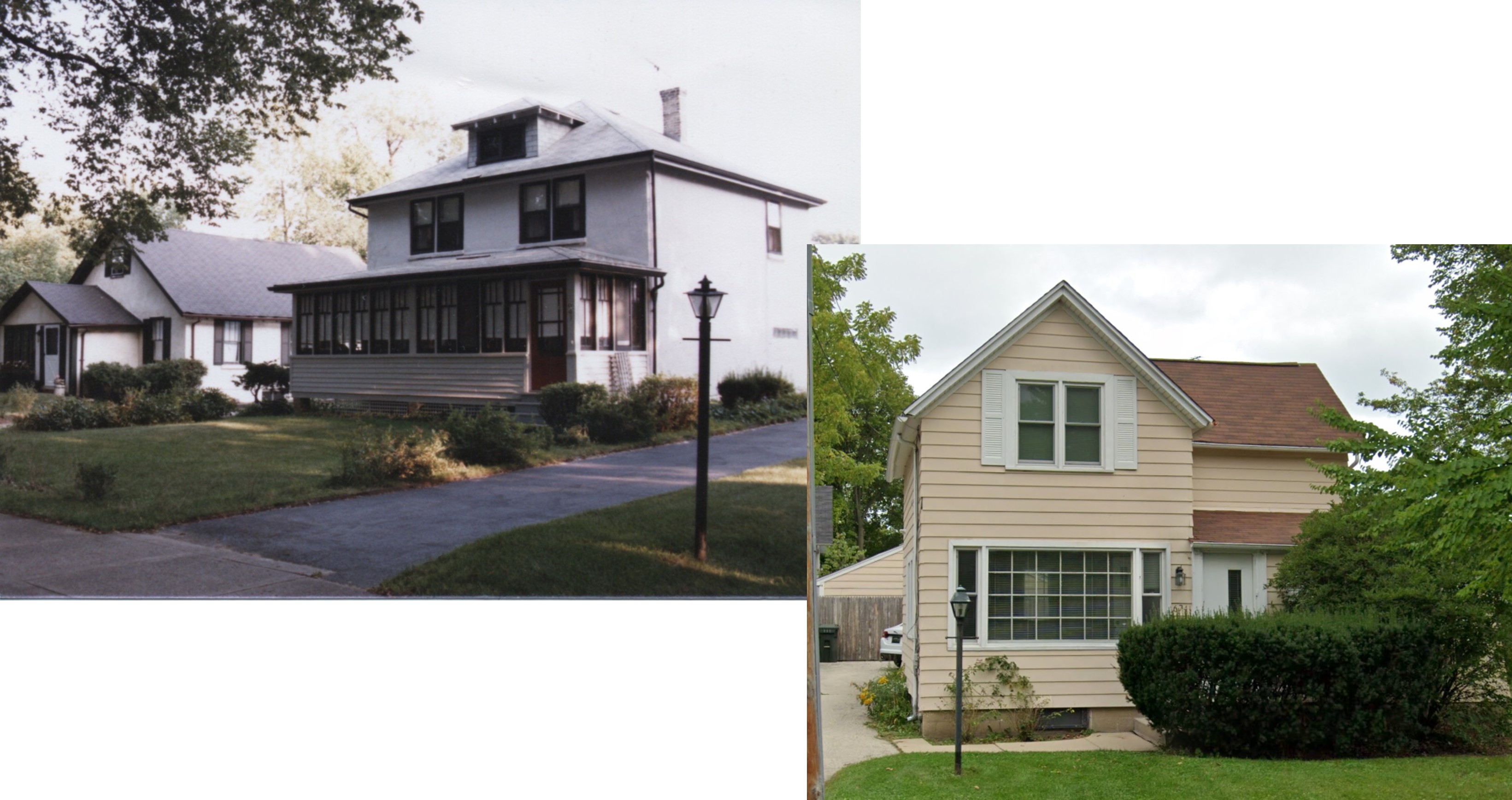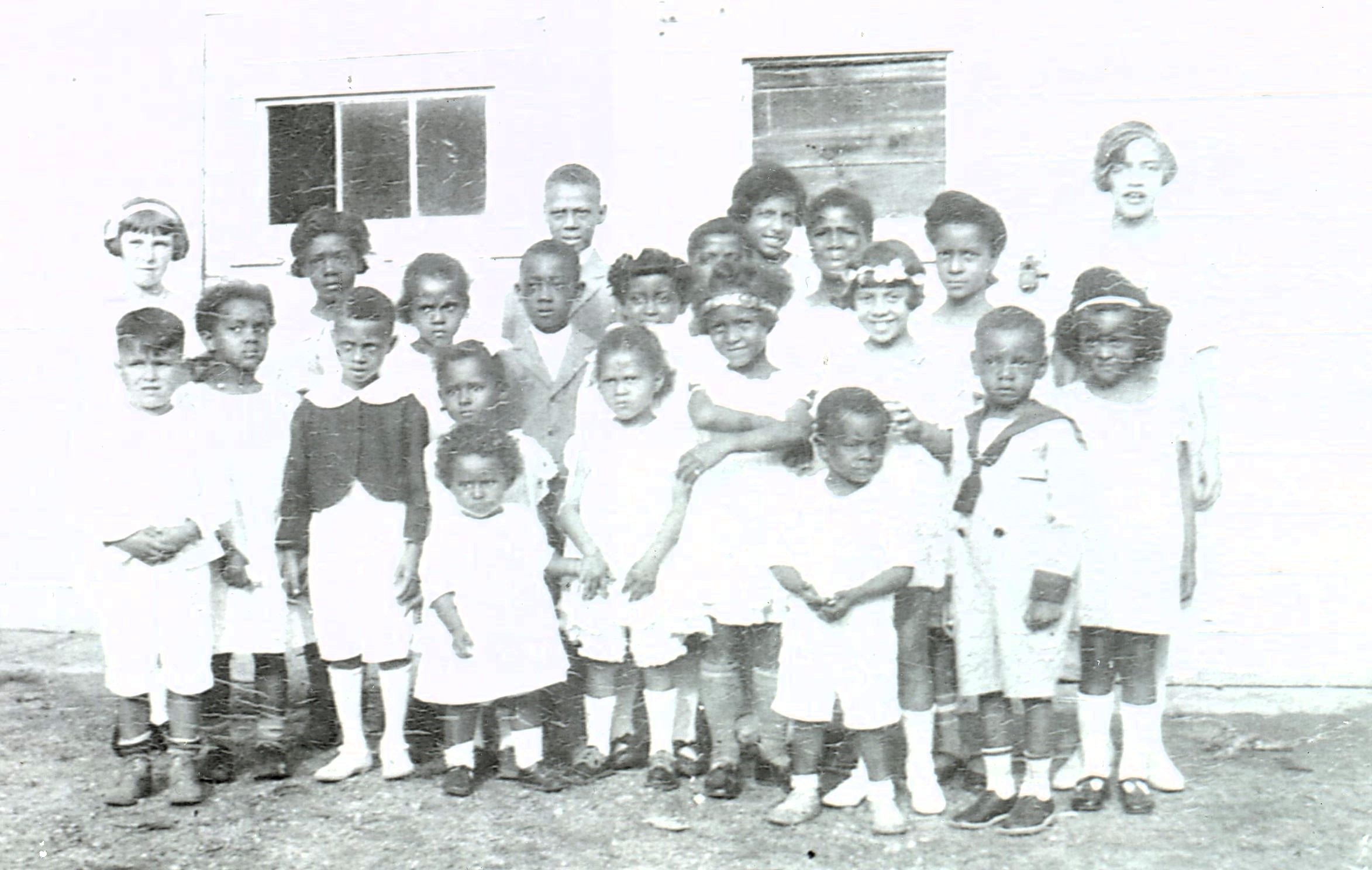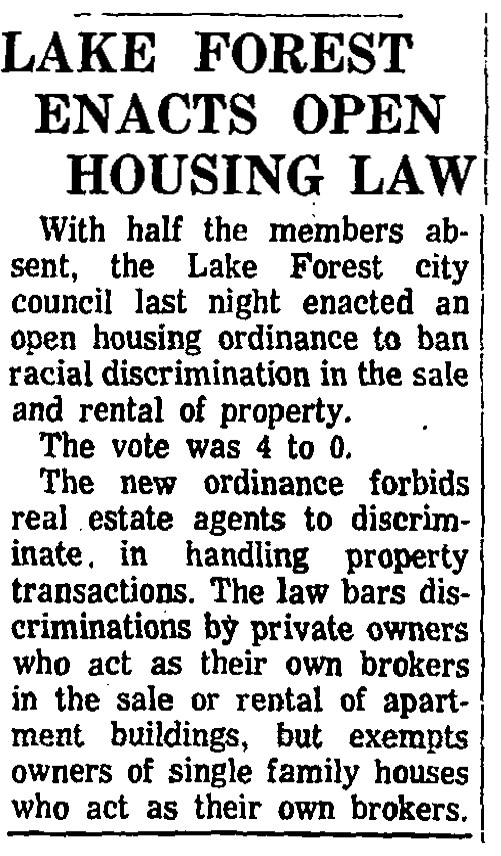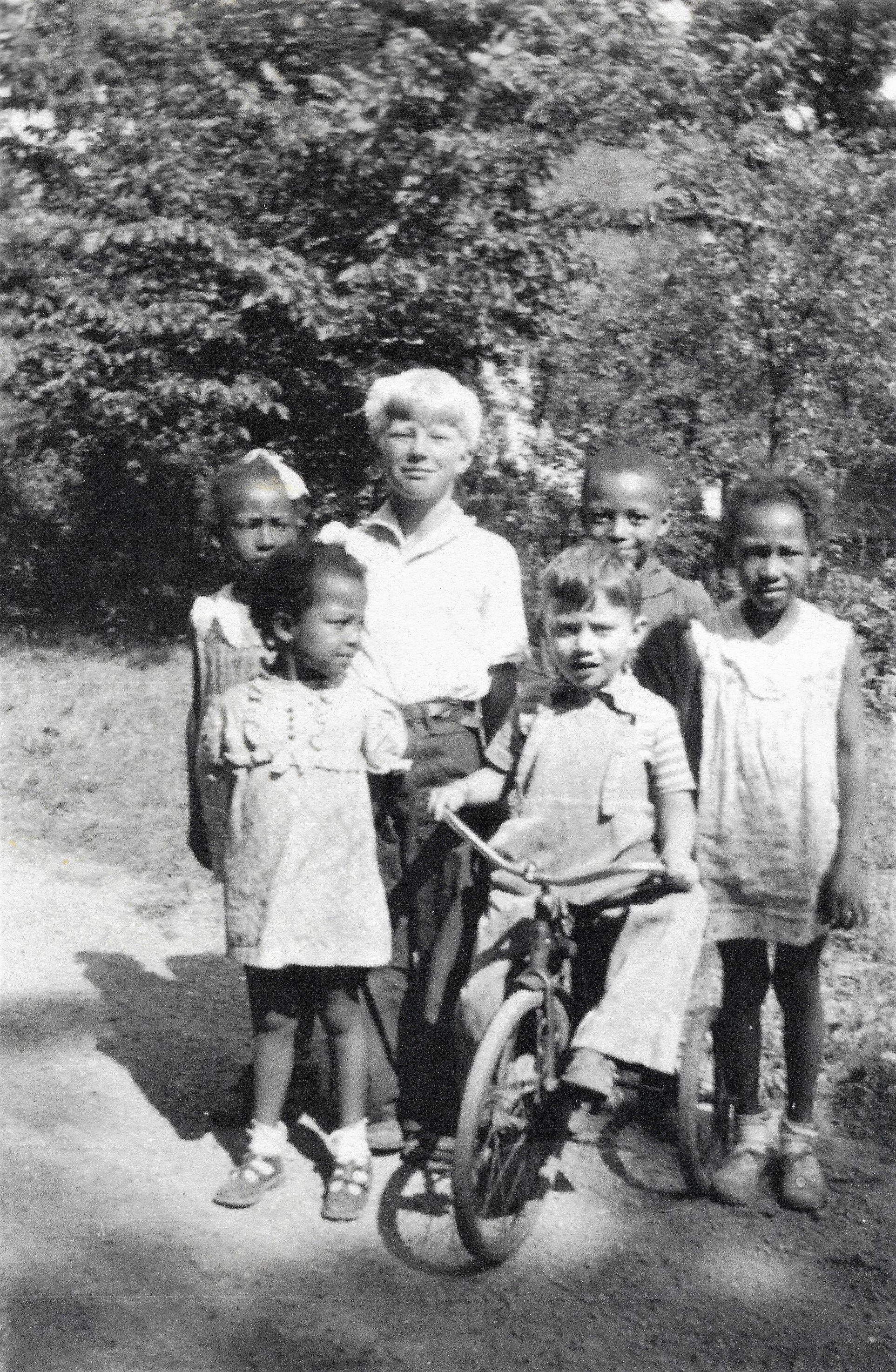Today, Lake Forest’s Black residents live all around the city, but historically, this was not always the case. In the late 1800s and early 1900s, African Americans built homes mainly in specific neighborhoods. Some were soon overtaken by development: on Maplewood, near the AME church (now Lake Forest College South Campus), and at Illinois Road and Bank Lane (now the site of the Deer Path Inn). Others thrived for decades: at Illinois and Washington roads, and along Spruce Avenue and Edgewood Road.
Two threads run through the evolution of these neighborhoods. Even though African Americans have held property in Lake Forest nearly since the town was founded, by the 1920s race-based restrictions, most commonly in the form of background “gentleman’s agreements,” but also in writing on deeds, limited which lots in town could be sold to Black homeowners. It was not until the Civil Rights movement in 1968 that Lake Forest finally passed an open housing ordinance addressing this problem.
Despite this, also underlying the Black neighborhoods was a vibrant sense of community, personal connections based on proximity and shared life experience. The neighborhoods provided a landing place for African American migrants from the South, as they adapted to a whole new milieu. Neighbors helped prop each other up, exchanging vegetables and casseroles, watching each other’s kids and mowing each other’s lawns.




